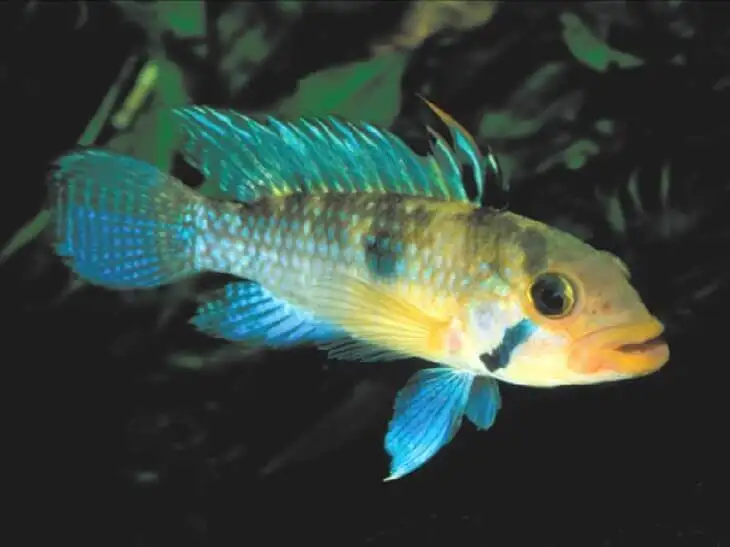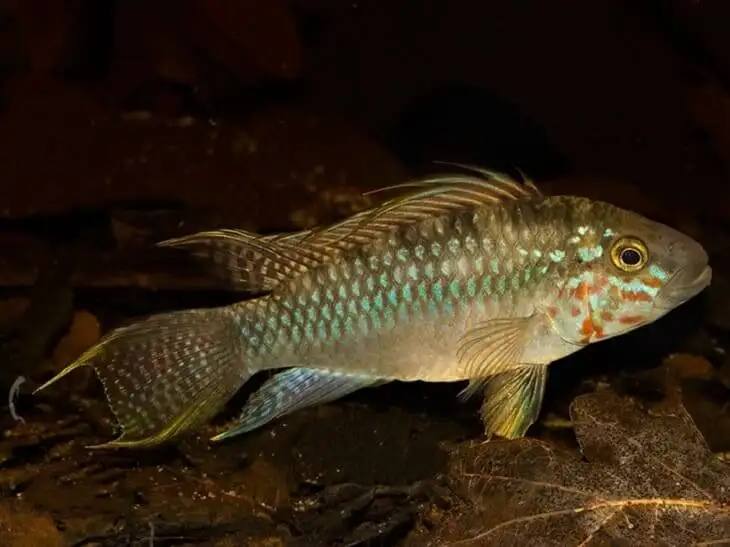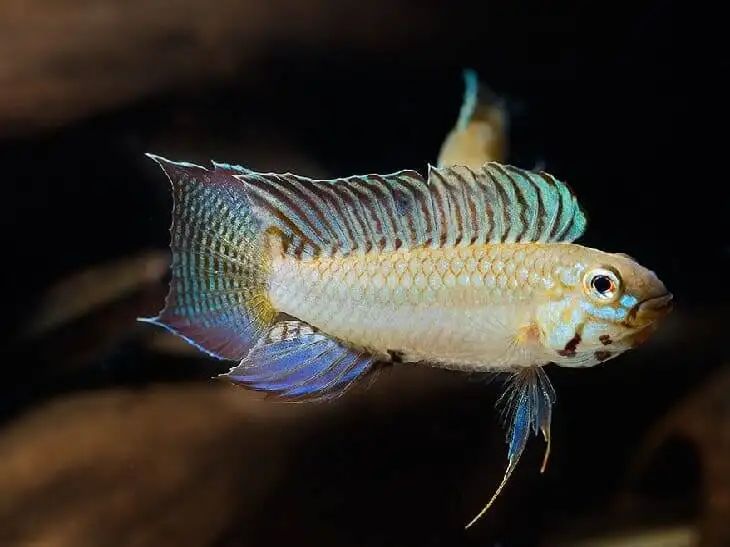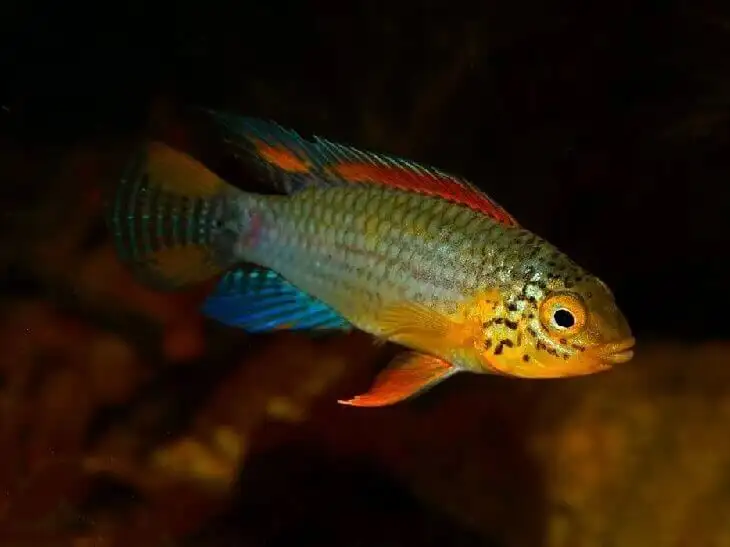Apistogramma norberti

Apistogramma Norberti naturally inhabits the Rio Tauayo River basin and also occurs in the Rio Tamshiyaku River basin, both tributaries of which flow into the Amazon River. Much of the area through which these rivers flow runs through the rainforest. The riverbeds are covered with a thick layer of fallen leaves and tree branches. Decomposing organic matter at the bottom causes the water to have a brownish colour. The water level in the rivers is highly dependent on the season and during the rainy season the rivers overflow their banks and flood adjacent areas.
Overall, Apistogramma Norberti are quite attractive fish and their keeping will not be a problem even for novice aquarists.
Male Apistogramma Norberti has a bright coloration, bluish back and yellow-pink front. The fins are elongated. The dorsal plumage starts at the head of the fish and extends all the way to the root of the tail plumage. There is a diagonal dark band across the eye. With the onset of the spawning season, the colouration of the males becomes more contrasting. Females are usually yellowish in colour. Males are larger than females, measuring up to 6 cm, while the maximum size of females does not exceed 4 cm.
It is possible to keep Apistogramma Norberti singly, in pairs or in a small group of 5-6 individuals. It is desirable that in one aquarium was not more than 1 male, otherwise they will be constantly in conflict with each other. To keep fish suitable aquarium of 60 liters. may contain in a common aquarium with other peace-loving commensurate in size fish.
Coarse-grained river sand should be used as substrate. Place large flat stones, ceramic pots, snags and tree branches at the bottom. The perimeter of the aquarium should preferably be planted with various plants. Pre-dried beech or oak leaves may be littered at the bottom. The decomposition of these leaves will develop bacterial colonies, which are good food for the fry. We recommend replacing the leaves once a month with new ones.
Water parameters: temperature 24-28° C, hardness dH 0-3°, pH 4,5-6,5. Filtration and aeration should not be too strong. Replace ¼ of the aquarium water weekly with fresh water.
Light is poor, with an intensity of approximately 0.25 W/l, which should be considered when planting in the aquarium, selecting shade-tolerant specimens.
The fish are carnivorous, and feed on small invertebrates in nature. In an aquarium, they can be fed with daphnia, artemia or chironomid. The fish can also gradually become accustomed to dry flakes and pellets. The apistogramma is fed twice a day.
Reproduction
Under acceptable keeping conditions, the Apistogramma Norberti spawns periodically. During the spawning period, the male in every way begin to take care of the female by attracting her spawning spot, which is usually a crevice between the stones, a ceramic pot or a plastic tube.
After spawning, the female takes over full care of the eggs and then the hatchlings. The male does not show parental care and should be temporarily removed to another aquarium immediately after spawning. As soon as the fry stop swimming in a friendly flock of them preferably be transferred to a separate aquarium.
The fry are fed with artemia and dry food intended for cichlid fry.
Apistogramma Norberti has a lifespan of 4-5 years under aquarium conditions.








